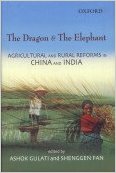The updated and improvised new estimates on global poverty released by a World Bank study last August have opened up a new debate on the impact of these estimates on the poverty profiles of developing countries. This concerns countries like China and India especially that have projected having made remarkable strides in their rural development and poverty alleviation programmes. At its core, these new estimates of the World Bank are based on a revised definition of the global poverty line to $1.25 per day as per 2005 purchasing power parity (PPP) as opposed to the $1.08 per day of their earlier 1993 PPP estimates. What is interesting is that the World Bank has also revised its PPP estimates. Put simply, while comparing the strength of economies of various nation-states around the world, the comparison is sought to be made on the basis of their respective purchasing power within their own political boundaries.
This is calculated on the basis of a methodology that was originally suggested in a joint project of the United Nations and the University of Pennsylvania in 1968, popularly known as the ‘Penn effect’. In this a common ‘basket of goods and services’ is evolved based on what is the minimum common consumption around the world. Then the ‘quantity & quality’ of these goods and services that $1 can buy in the US is measured in terms of its cost in other countries which becomes their PPP.

